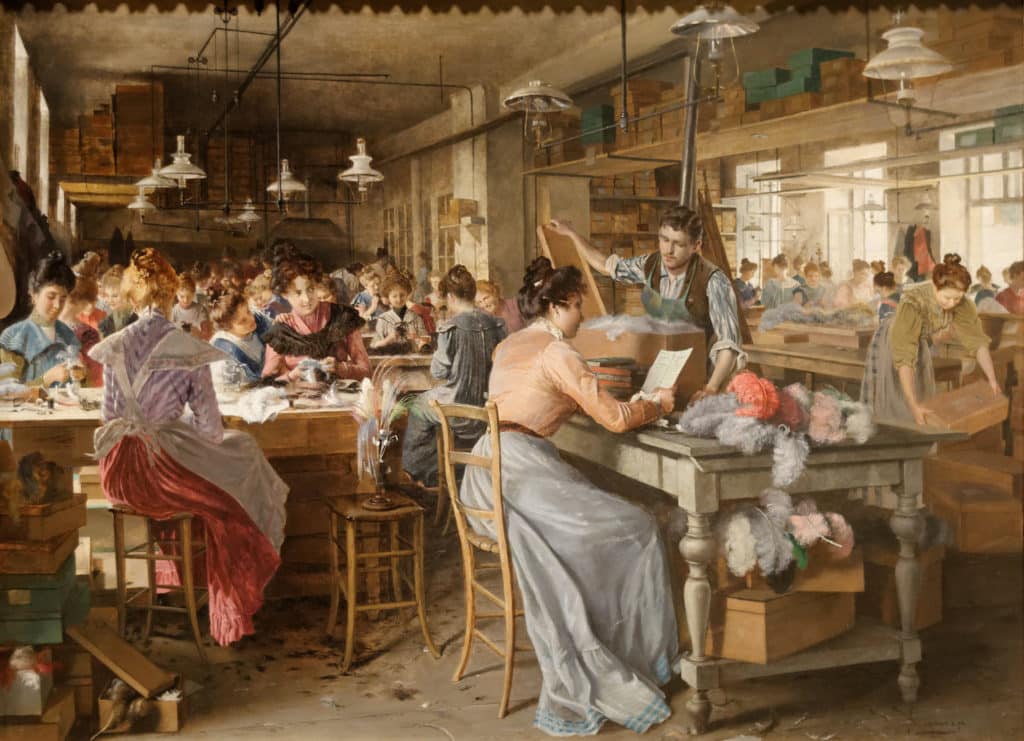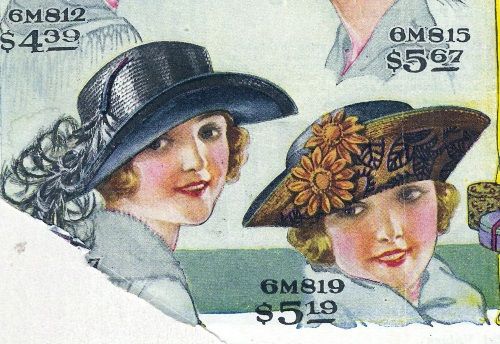Why We Wear Hats
Humans have covered their heads since evolution. Initially headwear offered protection from the elements, from injury or from falling rocks, weapons or masonry. Later head coverings became symbols of status of authority or of uniform and as time progressed they became an art form as well as an everyday piece of apparel.
In fashion terms hats are a very noticeable accessory because the onlooker’s attention is always first drawn to the face. A hat is the most noticeable fashion item anyone can wear. The old saying goes 'if you want to get ahead and get noticed, then get a hat'. Indeed the word ahead means just that one head further forward.
About 85% of body heat is lost through the head, so in inclement conditions it is important to cover the head. Babies in particular lose heat rapidly through the head so ensuring a baby or toddler has a warm covered head in winter is important.
Origin of Milliners

Millinery has existed in Britain since 1700. In English courts the term milliner was used and this was derived from the term for travelling haberdashers from Milan in Italy. These travelling sales people sold all the items necessary to dress and were called millaners.
In France hats were made by hatmakers called chapeliers. Today the term modiste is used in France. Today technically a hatmaker makes hats for men whilst a milliner makes hats for women.
Plumassiers

Running parallel to these hat making arts were feather workshops or more correctly workshops called plumassiers where feathers were dyed and made into arrangements from boas to aigrettes to tufts and sprays for both the worlds of fashion and interiors. Plumes have always been a status symbol and sign of economic stability.
Fortunes were paid by rich individuals for exotic feathered hats. Gorgeous feathered hats could command as much as £100 in the early Edwardian era. The Edwardians were masters in the art of excess and the flamboyant hats of the era are a clear example of this.
At one point whole stuffed birds were used to decorate hats, but as the new more enlightened century emerged, protests were voiced. In America the Audubon society expressed concern and in England the RSPB (Royal Society for the Protection of Birds) campaigned for ecological understanding.
Eventually plumage pleas were heard and Queen Alexandra forbad the wearing of rare osprey feathers at court so that the osprey bird was not plundered for feathers.
For a few years magazines quietly ignored making reference to feathers on hats as women continued to wear them. But soon the use of other rare bird feathers was banned and thereafter only farmed feathers could be used and only from specific birds.
The Demise of Hat Wearing
Etiquette and formality have played their part in hat wearing. At the turn of the 20th century in 1900, both men and women changed their hats dependant on their activity, but for many ladies of some social standing it would be several times a day.
Etiquette articles suggest that it would be A disgraceful act to venture out of the house without a hat or even gloves. One record tells of a young lady venturing out to post a letter without her hat and gloves and being severely reprimanded for not being appropriately dressed. The post box was situated a few yards from her front garden gate.
In the Edwardian age it did not matter if you were poor or rich, old or a child, whatever the status a person wore a hat, only beggars went bareheaded. Even militant suffragettes did not campaign without a hat. The hat would be fairly functional in style and form, but a hat was still worn.
Hat Decline After Wars
Once the Great War of 1914-18 began, fashion was influenced by the new wartime employment activities women had to engage in and the need for more practical utilitarian dress could not help but filter into what there was of mainstream fashion. Uniforms were everywhere as women did jobs once done by men and every job had a distinct uniform.
Before the Great War being in service as servants was the usual employment for most women as housemaids, cooks or seamstresses. Choice had opened up in the last two decades and slowly some had become shop workers at the new emerging department stores and the more technically minded had become stenographers or telephonists.
Women began to seriously participate in sports and needed clothes to move freely. Fashion adapted to their needs providing outfits for golf, climbing, skating, dancing, keep-fit, swimming and cycling.

Then when the Second World War 1939-45 started, hats became less practical as people had to rush to air raid shelters and they would literally drop everything.
Barriers of etiquette became broken down and although hats were not rationed in order to boost morale their wearing decreased.
Hats that were worn were generally practical and often homemade knitted warm hats, berets and hoods.
Fast hats were formed as women tied headscarves into an instant hat such as a turban. Designers produced various new styles, but many only became universally popular after the war finished.
Hats for Occasions
As the years have passed hats have slowly lost favour, even for weddings and worship with only a proportion of the congregations donning them.
They have never been worn universally since the 1920s. They were popular again in the 1980s for weddings and special occasions after the Princess of Wales, Diana used them to add a sense of sophistication to her persona in the early days of her marriage. Once she found her confidence she abandoned hats for most occasions.
Hats when worn today are either worn for a special dressy occasion such as a wedding or conversely as casual statement attire in the way that caps might be worn the wrong way around. Functional hats are still used by uniformed workers for corporate identity or protection as well as by many individuals in inclement weather.
Individuals wear fur hats or simple fleece beanie hats in very cold weather and use sunhats in very sunny weather. Those who cannot bear a hat unwittingly adopt a hat form built into a garment, as in a hoodie casual zip top.
It is unlikely that the hat will ever die as an accessory as it offers far too much potential for drawing attention to the face.
Fashion designers are aware of this and every so often exploit this fact in the hope that fashion followers will adopt the hat. In the world of logos, branding and status symbols the hat is an easy and usually less costly item to purchase from a design house and can make them a great deal of money if a particular item catches the imagination of the public. Often it advertises the company name.
Unfortunately, the fact that a hat being relatively small is more easily affordable by the masses, means that every so often an item like the Burberry cap found itself eventually banned from certain social venues as it became associated with poor street and pub and club behaviour.
Recently Burberry withdrew this hat in order to disassociate itself from those who wore it as a uniform that gave the message bad boys!


